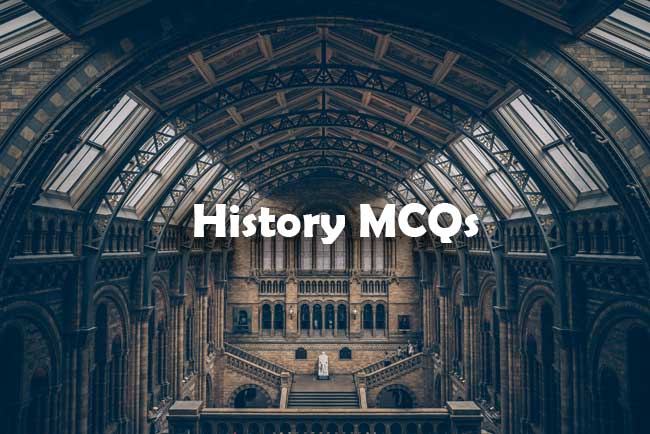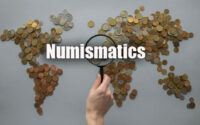GPSC History Questions
Find the direct download link for GPSC History Questions paper pdf in the section below. Aspirants who are looking for GPSC History General Knowledge Papers can find in the table below. Are you searching for the Gujarat Public Service Commission History Sample Papers for starting exam preparation?

Don’t worry. We attached the free downloading links of Gujarat Public Service Commission History General Knowledge Old Papers. By referring the Last 5 years Gujarat Public Service Commission History Previous Question Papers, candidates can analyse the exam pattern.
GPSC History Questions Papers will help you to get a good score in the exam. By clicking on the below-enclosed links, you can download the GPSC History Questions Papers with solutions in the form of Pdf.
History Questions for GPSC Exam
1. In the Interim government headed by Jawaharlal Nehru, his official designation was :
(A) Prime Minister
(B) Chairman
(C) Chief Minister
(D) Vice-President
2. The ‘Kanam’ tenure is a unique feature of :
(A) Kerala
(B) Karnataka
(C) Tamil Nadu
(D) Andhra Pradesh
3. The first free university in India, completely independent of the Government and receiving no grant from it, was :
(A) Vishva Bharati, Shantiniketan
(B) Aligarh Muslim University
(C) Women’s University, Pune
(D) Benares Hindu University
4. Pandit Jawaharlal Nehru’s autobiography is named :
(A) Indian Political Trials
(B) Indian Women : From Pardah to Modernity
(C) Indian National Movement : Its Ideological and Socio-economic Dimensions
(D) Towards Freedom
5. Which historiography among the following is considered the more advanced during ancient times ?
(A) Roman
(B) Greek
(C) Church
(D) Arabic
6. Law of ‘Twelve Tables’ is concerned with which civilization ?
(A) Indus
(B) Roman
(C) Egyptian
(D) Chinese
7. The book ‘Common Sense’ is written by :
(A) Hobbes
(B) Locke
(C) Paine
(D) Rousseau
8. According to Toynbee, what should be the historian’s unit of study of history ?
(A) State
(B) Family
(C) Civilization
(D) Nation
9. Who was associated with the reform movement of Roman Catholic Church ?
(A) Martin Luther King (Jr.)
(B) Martin Luther
(C) Severus
(D) Decius
10. One of the following was not part of Nazi ideology :
(A) Racism
(B) Rationalism
(C) Nationalism
(D) Supremacy of state over the individual
11. Which of the following factors is not responsible for decolonization in the post-war period ?
(A) Increasing disinterest of the colonial powers in having colonies
(B) Establishment of the UNO
(C) The emergence of Soviet Russia as a major power
(D) The rise of nationalism in Asia and Africa
12. The first Summit meeting of the Non-Aligned movement was held in :
(A) Belgrade
(B) Delhi
(C) Cairo
(D) Jakarta
13. Who was the Prime Minister of England when a bill was passed to abolish slavery ?
(A) Edward Stanley
(B) Palmerston
(C) Peel
(D) Lord Grey
14. Which country was never a member of the League of Nations ?
(A) England
(B) USA
(C) France
(D) Germany
15. Great depression started in the year :
(A) 1909
(B) 1919
(C) 1929
(D) 1939
16. Which country was in search of port to be useful in winter in 19th century ?
(A) Russia
(B) U.K.
(C) Turkstan
(D) South Africa
17. The word ‘terracotta’ stands for :
(A) a kind of fire-baked earthen object
(B) cosmetic item worn by women
(C) semi-precious stone objects
(D) construction method
18. Which was the earliest tax known during Rigvedic age ?
(A) Bali
(B) Bhaga
(C) Vishti
(D) Kara
19. Which of the following Ancient religious sects is known as materialistic one ?
(A) Buddhism
(B) Jainism
(C) Charvaka
(D) Vaishnavism
20. According to Jaina tradition perfect knowledge is called :
(A) Shuddha Dnyana
(B) Shubhra Dnyana
(C) Nischit Dnyana
(D) Kaivalya Dnyana
|
More History Questions for Preparation
|
|
| UPSC | TNPSC |
| GPSC | WBCS |
| NDA | SSC CHSL |
| DSSB | SSC CGL |
| AFCAT | MTS |
| RRB NTPC | MPSC |
| MPPSC | CDS |
| BPSC | |
21. Kingdom of Porus was spread between rivers named :
(A) Oxus and Indus
(B) Jhelum and Chenab
(C) Ganga and Yamuna
(D) Chenab and Ravi
22. In Mauryan Bureaucracy the High Treasurer was known as :
(A) Sannidhata
(B) Samaharta
(C) Pratihari
(D) Gopa
23. Tolkappiyam of the second Sangam deals with :
(A) Poetry of nature
(B) The legends of Agastya
(C) Grammar
(D) Achievement of Pandyas
24. Who among the following started practice of donating lands with fiscal and administrative amenities to Brahmanas and Buddhist monks ?
(A) Mauryas
(B) Satavahanas
(C) Shungas
(D) Guptas
25. What was the main reason for the fall of Guptas ?
(A) Natural calamity
(B) Lack of coins
(C) Huns’ attacks
(D) Poor administration
26. The most famous Indian city of the production of cotton cloth during the period of the visit of Hsuan Tsang was :
(A) Banaras
(B) Pataliputra
(C) Surat
(D) Mathura
27. The part of Barbaricum is situated at :
(A) Mouth of Gangas
(B) Mouth of Kaveri
(C) Mouth of Narmada
(D) Delta of Indus
28. Who was the founder of the Pallava dynasty ?
(A) Vishnu Gopa
(B) Sivaskandavarman
(C) Simhavishnu
(D) Mahendravarman
29. Ramanujacharya is associated with :
(A) Advaita Philosophy
(B) Dvaita Philosophy
(C) Vishistadvaita Philosophy
(D) Tantrik Philosophy
30. The title of ‘Gangaikondachola’ was adopted by :
(A) Karikala Chola
(B) Rajendra I
(C) Rajaraja I
(D) Kultunga
31. The ‘Lekhapaddhati’ is a text that throws light on :
(A) Rules of grammar for Sanskrit
(B) Socio-economic life in Gujarat
(C) Kingship in Rajasthan
(D) Jewish trade with India
32. During which dynastic period was the Halebid temple built ?
(A) Chalukya
(B) Hoysala
(C) Chola
(D) Pandya
33. Lalla Ded was a famous female saint from :
(A) Rajasthan
(B) Gujarat
(C) Kashmir
(D) Bengal
34. The Naqshbandi order was established in India by :
(A) Ahmad-Ata-Yasvi
(B) Muhammad Baqi Billa
(C) Shah Waliullah
(D) Nasiruddin Chiragh
35. Who among the following was the first king to make Agra the capital of his empire ?
(A) Sikandar Lodi
(B) Babar
(C) Ibrahim Lodi
(D) Humayun
36. In which of the following literary works is the term ‘Maharashtra Dharma’ first used ?
(A) Mahikavitichi Bakhar
(B) Gurucharitra
(C) Sabhasad Bakhar
(D) Jedhe Shakavali
37. ‘Baharistan-i-Ghaibi’ was written by :
(A) Bhimsen Saxena
(B) Alauddin Isfahani
(C) Muhammad Qasim Astarabadi
(D) Abdul Hamid Lahori
38. On being posted to which of the following areas was a Mansabdar assigned the conditional ‘Mashrut’ rank ?
(A) Deccan
(B) Bengal
(C) Northwest Frontier
(D) Kashmir
39. The system of measurement of land for revenue collection purpose was known as :
(A) Kankut
(B) Batai
(C) Zabt
(D) Hast-o-bud
40. Who among the following handled the accounts of the Karkhanas under the Mughals ?
(A) Diwan-i-Mazalim
(B) Diwan-i-Buyutat
(C) Diwan-i-Taujih
(D) Diwan-i-Wazarat
| Ancient India | Modern India |
| Medieval India | World History |
41. Which Nayaka ruler was defeated by Vyankoji Bhonsale to establish the Maratha state of Thanjavur ?
(A) Vijayaraghava Nayaka
(B) Tirumala Nayaka
(C) Krishnappa Nayaka
(D) Virappa Nayaka
42. In Maratha fort administration, the Karkhanis was in charge of :
(A) Stores
(B) Construction
(C) Accounts
(D) Garrison
43. Which of the following was not a warship in the Maratha Navy ?
(A) Ghurab
(B) Mahagiri
(C) Galbat
(D) Pal
44. Which of the following was the anchorage tax collected at the ports during the Maratha period ?
(A) Khutwa
(B) Chiti
(C) Singoti
(D) Madavi
45. Where was marble used for the first time in Indian architecture ?
(A) The tomb of Akbar
(B) The tomb of Humayun
(C) The tomb of Sher Shah Sur
(D) Taj Mahal
46. The Christian missionaries represented :
(A) Anglicalism
(B) Evangelicalism
(C) Revivalism
(D) Totalitarianism
47. Doctrine of Lapse was adopted by :
(A) Lord Hastings
(B) William Bentinck
(C) Lord Dalhousie
(D) Lord Canning
48. The ‘Tattvabodhini Sabha’ was set up by Devendranath Tagore in the year :
(A) 1828
(B) 1830
(C) 1839
(D) 1866
49. Which of the following statements is correct ?
(A) Paramahansa Mandali attacked the religious bigotry of Islam
(B) Paramahansa Mandali attacked the philanthropic activities of Christianity
(C) Paramahansa Mandali attacked the caste system
(D) Paramahansa Mandali attacked the British rule
50. ‘Filtration theory’ was a theory pertaining to :
(A) Irrigation
(B) Local Self-Government
(C) Education
(D) Revenue


